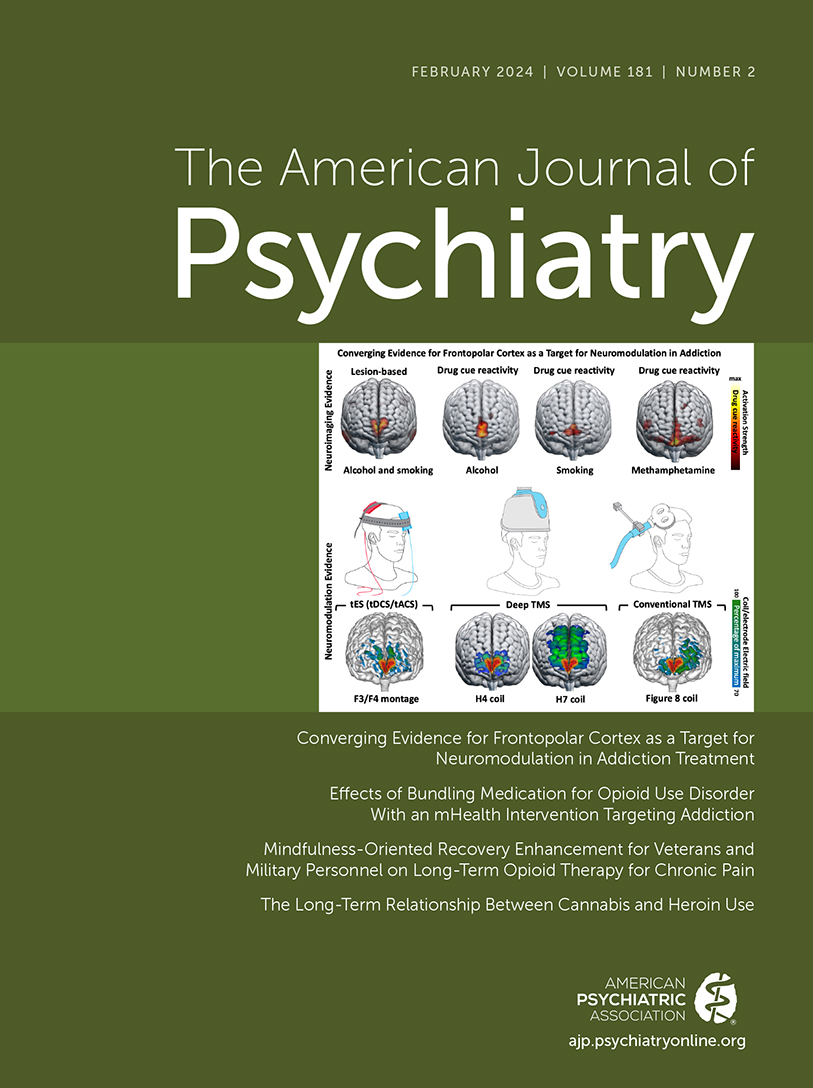Trends in Prevalence of Cannabis Use Disorder Among U.S. Veterans With and Without Psychiatric Disorders Between 2005 and 2019
Abstract
Objective:
Cannabis use disorder diagnoses are increasing among U.S. adults and are more prevalent among people with comorbid psychiatric disorders. Recent changes in cannabis laws, increasing cannabis availability, and higher-potency cannabis may have placed people with cannabis use and psychiatric disorders at disproportionately increasing risk for cannabis use disorder. The authors used Veterans Health Administration (VHA) data to examine whether trends in cannabis use disorder prevalence among VHA patients differ by whether they have psychiatric disorders.
Methods:
VHA electronic health records from 2005 to 2019 (N range, 4,332,165–5,657,277) were used to identify overall and age-group-specific (<35, 35–64, and ≥65 years) trends in prevalence of cannabis use disorder diagnoses among patients with depressive, anxiety, posttraumatic stress, bipolar, or psychotic spectrum disorders and to compare these to corresponding trends among patients without any of these disorders. Given transitions in ICD coding, differences in trends were tested within two periods: 2005–2014 (ICD-9-CM) and 2016–2019 (ICD-10-CM).
Results:
Greater increases in prevalence of cannabis use disorder diagnoses were observed among patients with psychiatric disorders compared to those without (difference in prevalence change, 2005–2014: 1.91%, 95% CI=1.87–1.96; 2016–2019: 0.34%, 95% CI=0.29–0.38). Disproportionate increases in cannabis use disorder prevalence among patients with psychiatric disorders were greatest among those under age 35 between 2005 and 2014, and among those age 65 or older between 2016 and 2019. Among patients with psychiatric disorders, the greatest increases in cannabis use disorder prevalences were observed among those with bipolar and psychotic spectrum disorders.
Conclusions:
The findings highlight disproportionately increasing disparities in risk of cannabis use disorder among VHA patients with common psychiatric disorders. Greater public health and clinical efforts are needed to monitor, prevent, and treat cannabis use disorder in this population.
Access content
To read the fulltext, please use one of the options below to sign in or purchase access.- Personal login
- Institutional Login
- Sign in via OpenAthens
- Register for access
-
Please login/register if you wish to pair your device and check access availability.
Not a subscriber?
PsychiatryOnline subscription options offer access to the DSM-5 library, books, journals, CME, and patient resources. This all-in-one virtual library provides psychiatrists and mental health professionals with key resources for diagnosis, treatment, research, and professional development.
Need more help? PsychiatryOnline Customer Service may be reached by emailing [email protected] or by calling 800-368-5777 (in the U.S.) or 703-907-7322 (outside the U.S.).



